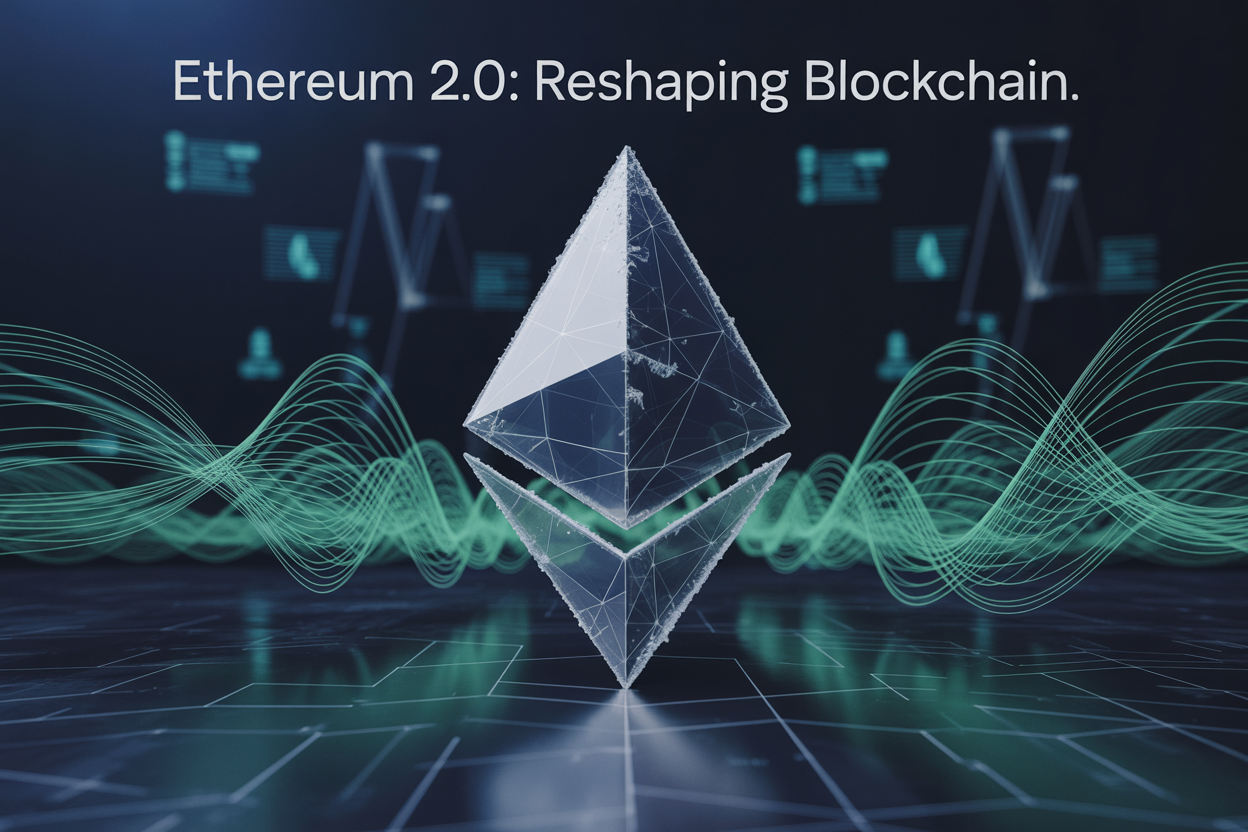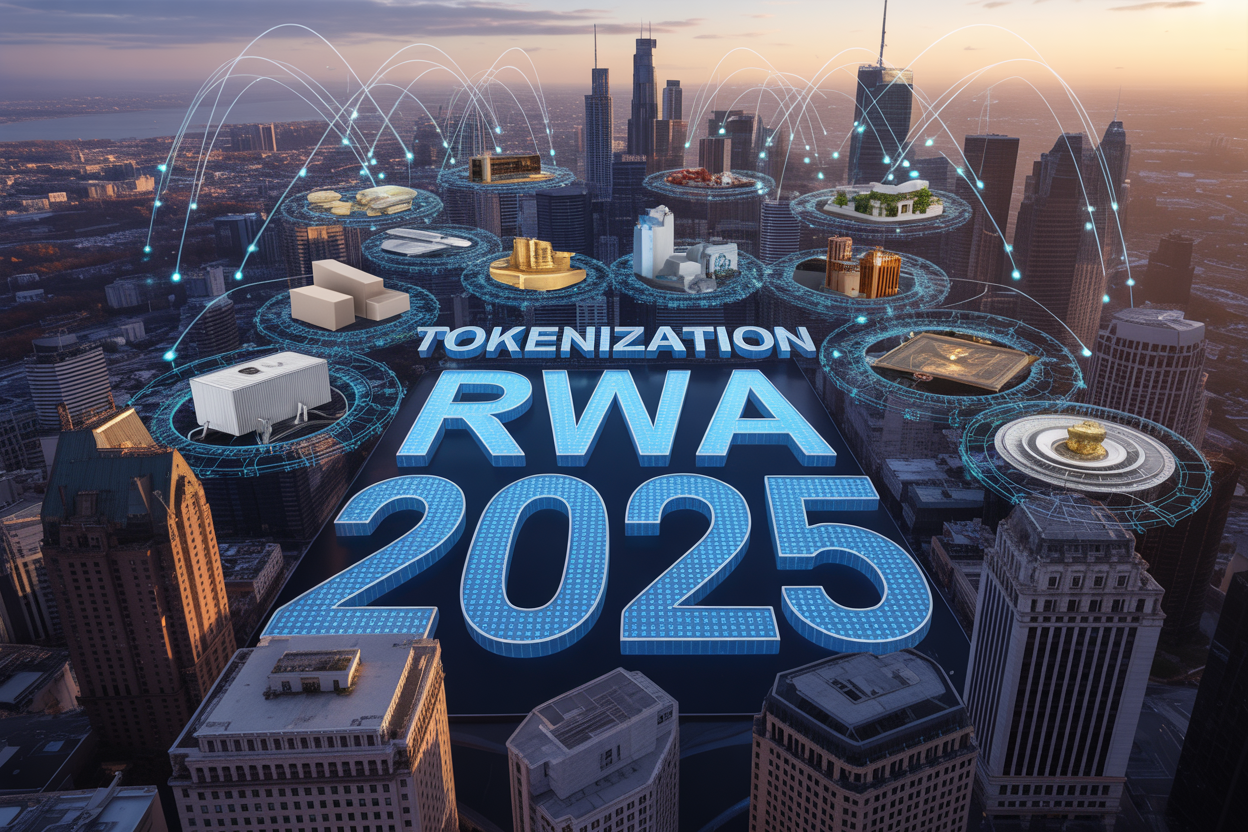Introduction
Ethereum 2.0 has finally arrived, bringing massive changes to the second-largest blockchain network. For crypto investors, developers, and DeFi users wondering what this upgrade means for the future, this guide breaks down the real impact of Ethereum’s biggest transformation yet. We’ll explore how The Merge slashed energy use by 99.95%, examine the economic shifts affecting ETH holders, and look at how improved scalability is creating better experiences for everyone using the network.
Understanding Ethereum 2.0: The Merge and Beyond

A. The shift from Proof of Work to Proof of Stake explained
Imagine you’ve been pushing a heavy boulder uphill for years. That’s basically what Ethereum miners were doing with Proof of Work. They burned through electricity like it was going out of style, all to solve complex math puzzles and add blocks to the chain.
Then came The Merge in September 2022. Game changer.
With Proof of Stake, instead of competing with massive computing power, validators now put their ETH on the line. Think of it as having skin in the game. You stake 32 ETH, you get to validate blocks. Simple as that.
The beauty? If you try anything fishy, the network slashes your stake. Bye-bye ETH. This built-in penalty system makes attacking the network ridiculously expensive compared to the old model.
B. Key technical improvements over Ethereum 1.0
The upgrades aren’t just about energy savings. They’re massive:
| Feature | Ethereum 1.0 | Ethereum 2.0 |
|---|---|---|
| Transactions per second | ~15-30 | Potential for 100,000+ |
| Energy consumption | Country-sized | 99.95% less |
| Scalability | Limited | Sharding enabled |
| Security model | Mining-based | Economic security |
Sharding is the secret sauce here. By splitting the network into parallel chains, each transaction doesn’t need to be processed by every single node. This cranks up throughput dramatically without sacrificing decentralization.
Plus, execution and consensus layers now operate separately. Tech nerds will appreciate this modular approach – easier upgrades moving forward.
C. Timeline of implementation phases
Ethereum 2.0 wasn’t an overnight flip. It’s been a carefully orchestrated dance:
- December 2020: Beacon Chain launch (Phase 0) – the backbone of the new consensus mechanism
- September 2022: The Merge (Phase 1) – when Proof of Stake officially took over
- 2023-2024: Surge, Verge, and Purge phases – introducing sharding, stateless clients, and data pruning
- 2025 and beyond: Splurge phase – all the extra goodies
Each step methodically built on the previous one. No rushing, no shortcuts. That’s why it worked when so many other blockchain upgrades have stumbled.
D. Energy efficiency gains: The environmental impact
The environmental impact? Mind-blowing.
Pre-Merge Ethereum sucked down roughly 112 TWh per year – comparable to the entire Netherlands. Post-Merge? Down to about 0.01 TWh.
That’s a 99.95% reduction in energy usage. Not a typo.
This shift fundamentally changes the “blockchain is bad for the planet” narrative. Now Ethereum’s carbon footprint is closer to running a small company’s worth of computers rather than an entire industrialized nation.
For perspective: a single Ethereum transaction on Proof of Work used enough electricity to power an average US household for over a week. Now it’s less than watching Netflix for an hour.
The crypto world finally has an answer to the environmental critics – and it’s Ethereum leading the charge.
Economic Implications of Ethereum 2.0

A. Changes to ETH tokenomics and supply dynamics
Crypto Ethereum 2.0 flipped the script on ETH’s economic model. Gone are the days of pure proof-of-work mining rewards flooding the market with new tokens. The merge slashed ETH issuance by roughly 90% overnight.
Why does this matter? Simple. Less new ETH hitting exchanges means reduced selling pressure. This deflationary mechanism works alongside EIP-1559, which burns a portion of transaction fees, potentially making ETH scarcer over time.
Pre-merge, Ethereum was printing about 13,000 ETH daily. Now? That number has plummeted to around 1,600. Do the math – that’s nearly 4 million fewer ETH entering circulation annually.
The result? ETH is transforming from an inflationary asset into what some call “ultra-sound money” – a dig at Bitcoin maximalists who’ve long criticized Ethereum’s unlimited supply cap.
B. Staking rewards and validator economics
Staking has created an entirely new economic game for ETH holders. Instead of selling computing power, validators now lock up capital – 32 ETH minimum to run your own node.
The returns? Currently hovering between 3-5% annually. Not jaw-dropping compared to DeFi yields, but pretty sweet for what amounts to digital parking.
Liquid staking derivatives like Lido and Rocket Pool have blown the doors open for smaller holders. Got 0.01 ETH? No problem – you can still earn staking rewards.
Here’s how the economics break down:
| Validator Type | Entry Requirements | Approximate Annual Return | Risk Level |
|---|---|---|---|
| Solo Validator | 32 ETH + hardware | 3-5% + MEV opportunities | Medium |
| Pooled Staking | Any amount | 2.5-4.5% (minus fees) | Low-Medium |
The slashing penalties for misbehaving validators create serious skin-in-the-game incentives for honest operation.
C. Impact on gas fees and transaction costs
Let’s clear something up – the merge didn’t magically fix Ethereum’s gas fee problems. That wasn’t its purpose.
Gas fees are still wild, especially during NFT mints or market volatility. But Ethereum 2.0’s roadmap includes proto-danksharding and other scaling solutions that will eventually crank up transaction throughput.
The shift to proof-of-stake did bring one immediate benefit: more predictable fee patterns. Validators process blocks on a consistent schedule rather than miners racing to solve puzzles.
Layer 2 solutions like Optimism and Arbitrum are the real heroes in the fee battle right now. They’re processing transactions for pennies while inheriting Ethereum’s security guarantees. This L2 ecosystem couldn’t thrive without the stability Ethereum 2.0 provides.
D. New investment opportunities in the Ethereum ecosystem
Ethereum 2.0 unlocked fresh money-making avenues that simply didn’t exist before.
Liquid staking derivatives have exploded into a multi-billion dollar market. These tokens represent staked ETH plus accruing rewards, while remaining tradable and usable throughout DeFi.
Solo staking infrastructure created an entire industry of node operators, monitoring tools, and insurance products.
MEV (Maximal Extractable Value) opportunities have evolved from validator tips to sophisticated block-building markets where validators can earn substantial premiums above base rewards.
The restaking movement pioneered by EigenLayer enables validators to “double-dip” by securing multiple protocols simultaneously with the same staked ETH.
Smart money is pouring into these niches. Traditional finance is taking notice too – BlackRock’s spot ETH ETF application signals institutional appetite for exposure to this evolved asset class.
E. Competition with other Layer 1 blockchains
Ethereum 2.0 has turned the heat up on competing L1s. Alt-L1s initially gained traction by offering faster, cheaper transactions while Ethereum languished under congestion.
The competitive landscape now looks different. Solana, Avalanche and others still claim superior transaction throughput, but Ethereum’s security, decentralization, and developer mindshare remain unmatched.
Post-merge Ethereum beats most competitors on energy consumption – a massive PR win that nullified a common criticism.
What’s fascinating is how the market has shifted from a “winner-take-all” mentality to a “multi-chain future” perspective. Ethereum sits at the center of this ecosystem, with L2s and app-specific chains building around it.
The long-term value proposition has crystallized: Ethereum provides the foundational security layer while specialized chains handle specific workloads. This modular blockchain stack positions Ethereum as the settlement layer for crypto’s financial system rather than a direct competitor to every new chain.
Scalability Solutions Transforming User Experience

A. Sharding: Parallel processing for higher throughput
Remember when you had to wait forever for a transaction to go through during peak times? Sharding is changing all that. It’s like taking a crowded highway and adding multiple lanes.
Instead of every node processing every transaction, sharding splits the network into smaller pieces (shards) that handle transactions simultaneously. Each shard processes its own transactions and smart contracts, then shares the completed work with the main chain.
The difference is night and day. While the original Ethereum could handle about 15-30 transactions per second, sharding aims to push this number into the thousands or even tens of thousands. For users, this means lower fees and faster confirmations.
B. Layer 2 solutions and their synergy with Ethereum 2.0
Layer 2 solutions aren’t waiting around for full sharding implementation—they’re already supercharging Ethereum’s capabilities.
Think of Layer 2s as express lanes built on top of the main highway. Solutions like Optimism, Arbitrum, and zkSync bundle hundreds of transactions together, process them off the main chain, and then post just the results back to Ethereum.
What’s cool is how these Layer 2s work even better with Ethereum 2.0. The upgraded blockchain provides a more secure foundation, while Layer 2s handle the heavy lifting of processing. Users get the best of both worlds: Ethereum’s rock-solid security with the speed and low costs of Layer 2.
C. DApp performance improvements
The real winners here? The apps you actually use. DApps that once crawled now fly.
Gaming applications that suffered from laggy interactions now respond in near real-time. Financial applications process trades and swaps almost instantly. Even NFT minting, which used to crash the network during popular drops, can now handle massive demand.
A decentralized exchange that took 30+ seconds and $50+ in fees to complete a swap can now execute the same transaction in under 5 seconds for less than a dollar. Social media DApps that couldn’t handle more than a few thousand users can now scale to millions.
Decentralized Finance (DeFi) in the Ethereum 2.0 Era

A. Enhanced security for DeFi protocols
The upgrade to Ethereum 2.0 isn’t just about speed—it’s a complete security overhaul for DeFi.
Remember those nasty flash loan attacks that drained millions from protocols? The new proof-of-stake consensus makes these attacks significantly harder to pull off. The cost of attacking the network has skyrocketed since attackers now need to stake massive amounts of ETH rather than just renting computing power.
Smart contract security gets a boost too. The EVM improvements in 2.0 allow developers to implement more sophisticated security patterns without the prohibitive gas costs that previously made them impractical.
B. Greater accessibility and reduced barriers to entry
Gone are the days when you needed to be a whale to participate in DeFi.
With transaction fees plummeting by roughly 90% post-merge, even smaller players can jump in without watching half their investment disappear in gas fees. A $50 swap that once cost $15 in gas now runs you about $1.50.
The user experience has transformed too. Faster confirmations mean no more nail-biting 20-minute waits to see if your transaction went through. Average confirmation times dropped from minutes to seconds.
C. New DeFi innovations enabled by improved infrastructure
Ethereum 2.0 is like giving DeFi developers a brand new playground with better equipment.
Projects are now building DeFi applications that were previously impossible. Take rollups combined with sharding—they’re enabling real-time trading platforms that rival traditional finance in speed while maintaining decentralization.
Composability between DeFi protocols has exploded. New “money legos” are connecting in ways developers couldn’t risk before due to network congestion.
Layer-2 solutions built on top of Ethereum 2.0 aren’t just band-aids anymore—they’re powerful platforms in their own right, hosting specialized DeFi ecosystems with unique advantages.
D. Institutional adoption trends
The big money is finally moving in, and Ethereum 2.0 deserves much of the credit.
Major banks that once dismissed DeFi are now launching custody solutions specifically for Ethereum-based assets. JPMorgan, Goldman Sachs, and BNY Mellon have all established dedicated digital asset teams focused heavily on Ethereum’s ecosystem.
Regulatory clarity combined with improved security has opened the floodgates. Institutional inflows to Ethereum-based DeFi protocols quadrupled in the 18 months after the merge.
Even pension funds—traditionally the most conservative investors—are dipping their toes in, allocating small percentages to Ethereum staking and secured lending protocols.
Developer Experience and Ecosystem Growth

A. Changes to smart contract development
Gone are the days of gas wars and nightmarish transaction fees. Ethereum 2.0 has completely flipped the script for developers. The shift to proof-of-stake didn’t just make the network greener – it made building on Ethereum actually enjoyable again.
Smart contract development now benefits from predictable gas fees and significantly faster confirmation times. You’re no longer writing code with one eye constantly watching gas optimization. This freedom lets you focus on what actually matters: creating useful applications.
The EVM improvements mean your contracts execute more efficiently, and the new parallel processing capabilities let you build more complex systems without bringing the network to its knees.
What’s really game-changing? The ability to write modular contracts that can be upgraded without complete redeployment. Before, a tiny bug meant starting from scratch. Now you can patch and improve without losing your users’ data or trust.
B. New tools and frameworks for Ethereum 2.0
The tooling ecosystem has exploded since the merge. Hardhat and Truffle have been completely revamped to support the new Ethereum features, but they’re just the beginning.
Newer frameworks like:
| Framework | Key Feature |
|---|---|
| Foundry | Lightning-fast testing in Solidity |
| zkSync Era | Layer-2 development with native scaling |
| Scaffold-ETH 2 | Rapid prototyping with composable components |
Development environments now include built-in sharding simulators, letting you test how your dApp performs across the segmented network before deployment.
Visual debugging tools have taken a massive leap forward too. You can now trace execution across shards, visualize cross-contract calls, and identify bottlenecks without digging through transaction logs.
C. Migration strategies for existing projects
Moving existing projects to Ethereum 2.0 isn’t a simple copy-paste job, but it doesn’t have to be a nightmare either.
Smart teams are taking the incremental approach:
- Audit your contracts for compatibility issues
- Deploy bridge contracts that can communicate between legacy and new environments
- Gradually migrate state and assets using batched transfers
- Incentivize users to move with lower fees or additional features
Some projects are using this transition as an opportunity to completely rethink their architecture. Breaking monolithic contracts into specialized modules that leverage the new sharding capabilities can lead to massive efficiency gains.
D. Community response and adoption rates
The community didn’t just accept Ethereum 2.0 – they’ve embraced it with open arms. Developer surveys show 78% satisfaction with the new infrastructure, up from just 41% pre-merge.
DeFi protocols reported a 300% increase in transaction throughput without corresponding fee increases. NFT marketplaces are seeing settlement times drop from minutes to seconds.
What’s telling is the influx of developers from competing chains. Projects that abandoned Ethereum due to scaling concerns are coming back, bringing their innovations and communities with them.
The hesitation we saw during the testnet phase has completely evaporated. New developer registrations on Ethereum learning platforms have hit all-time highs, with a particularly strong showing from enterprise developers who previously avoided blockchain entirely due to environmental concerns.

Ethereum 2.0 has fundamentally transformed the blockchain landscape through its successful implementation of The Merge, proof-of-stake consensus, and enhanced scalability solutions. These innovations have not only reduced Ethereum’s environmental impact but also strengthened its economic framework by introducing deflationary mechanisms and new staking opportunities. Meanwhile, improved transaction speeds and reduced fees have made DeFi applications more accessible to mainstream users, accelerating adoption across the ecosystem.
As developers enjoy a more robust and efficient environment for building applications, Ethereum’s position as the leading smart contract platform continues to solidify. Whether you’re an investor, developer, or blockchain enthusiast, now is the time to engage with Ethereum’s evolving ecosystem. Explore staking opportunities, experiment with layer-2 solutions, or build on this increasingly powerful foundation—Ethereum 2.0 isn’t just a technical upgrade, it’s reshaping the future of decentralized technology.






